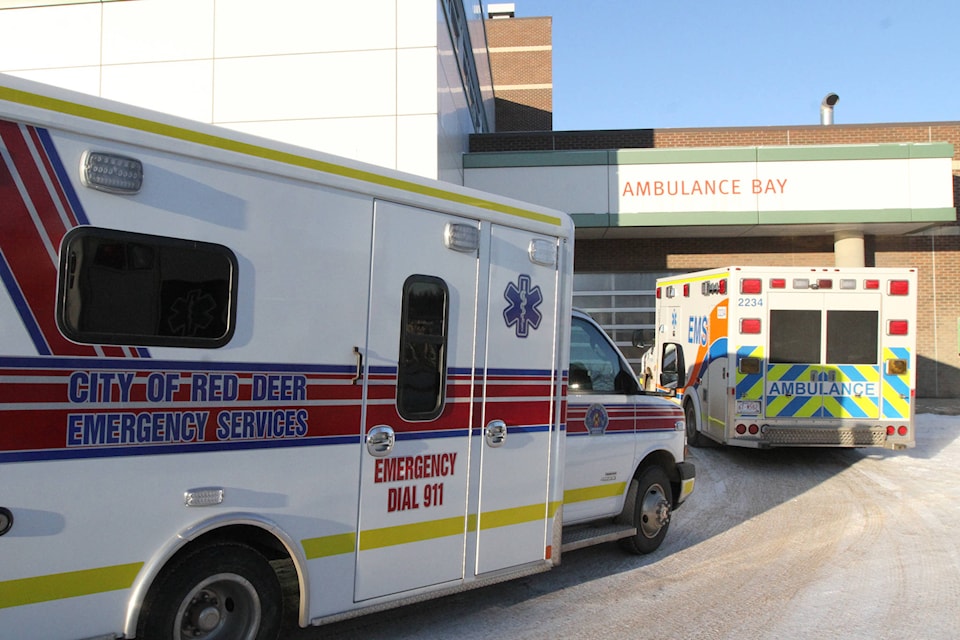A provincial plan to consolidate emergency services was called “foolish,” “short-sighted” and “crazy” by emotional city councillors on Tuesday.
They urged citizens to look out for their own interests by helping reverse a cost-saving decision to move ambulance dispatch out of this area to a regional hub in Calgary — or beyond.
“The clock is ticking, citizens! This is your time,” said Coun. Dianne Wyntjes.
With the change to a centralized ambulance dispatch system expected to happen on Jan. 4, “the city is asking you, council is asking you, to write to your MLA, pick up the phone and call (Health Minister Tyler) Shandro and tell him, ‘Do not do this!’” Wyntjes said.
Council discussed how AHS has been repeatedly proposing this same change to the dispatching system since 2009, but the idea was previously shot down four times by health ministers.
Once these ministers learned the facts and heard municipal concerns, they realized it doesn’t make any sense, said Mayor Tara Veer.
She disputes that the AHS proposal will even be cost saving, since municipalities now don’t fully charge for the help fire crews provide on health emergencies.
A report compiled by intergovernmental strategist Steven Ellingson shows that emergency vehicles will take longer to show up at health or accident scenes under the new system than what is happening in Red Deer currently.
Veer noted it would take two calls to deploy a fire truck with advanced life-saving equipment when ambulances are tied up and would take too long to arrive.
Why would anyone want to potentially wait up to 20 minutes to get an ambulance with basic life support to show up from another community, when a local fire truck could be there in four minutes or less, she said.
“I know which one I would choose.”
Coun. Lawrence Lee said expecting different results from presenting the same idea again and again over a decade has been described as “insanity, madness, craziness” — yet AHS seems intent on pushing through these destructive changes to a system that is not broken.
A “call to action” is needed, said Coun. Tanya Handley, who encouraged anyone who wants to prevent the dismantling of the city’s integrated dispatch system — which many ambulance and fire experts call superior and more responsive to local needs — to take their concerns to their MLAs.
She advised citizens to also contact Alberta Health and to express their feelings on social media, using the hashtag #secondscount.
“Let’s create some buzz around this.”
Ellingson’s report, which was supported by Red Deer’s EMS chief Ken McMullen, stated that it takes an average of 67 seconds for Red Deer dispatchers to send a first ambulance to an emergency.
This is less than the 85 to 91 seconds, on average, it takes in the south, north and central centralized communications centres.
The report states that many southern Alberta municipalities have discovered their emergency services have suffered since being moved to the centralized dispatch system. Many are now calling on the government to return to the old system of having local dispatchers.
Coun. Buck Buchanan said, “As a former policeman, I can tell you that seconds matter when saving lives. We need to tell (the province and AHS) don’t touch our system. Get your paws off, and back away. This is what we need.”
Ellingson’s report painted a dire picture. Among the concerns heard by council was that ambulances could be misdirected, since dispatchers from out of the area are not familiar with the rural region around Red Deer — or even this city.
A dozen central Alberta municipalities are already backing the City of Red Deer’s fight to stop the consolidation of emergency dispatch services.
